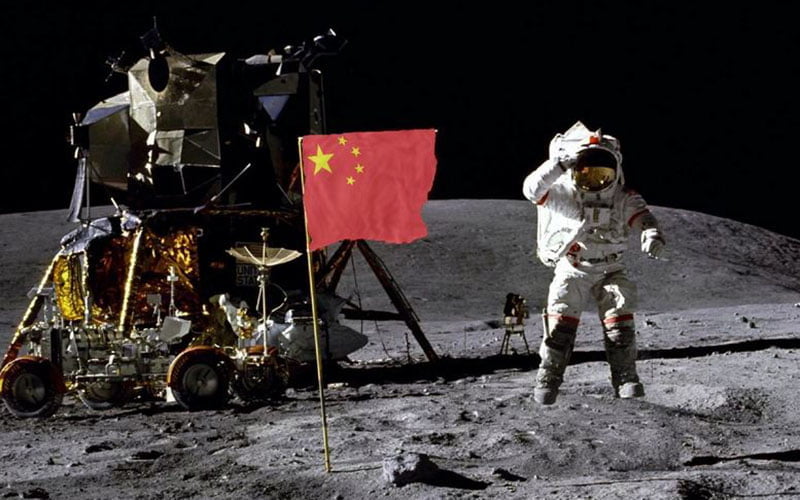
In recent years, the world has witnessed remarkable advancements in the field of space exploration. From sending missions to Mars to establishing a presence on the moon, countries are pushing the boundaries of what is possible. One such endeavor that has captured the imagination of scientists and engineers worldwide is the prospect of utilizing nuclear fusion fuel on the moon. Here, we will delve into the exciting developments surrounding nuclear fusion fuel of china moon mission. Join us as we explore the potential benefits, challenges, and implications of this groundbreaking technology.
Nuclear fusion holds immense promise as a clean and virtually limitless source of energy. Unlike traditional nuclear fission, which involves splitting atoms to release energy, fusion involves the combination of atoms to generate an even greater amount of energy. The fuel used in nuclear fusion reactors primarily consists of isotopes of hydrogen, such as deuterium and tritium, which are abundant in nature. This means that nuclear fusion has the potential to provide sustainable energy for generations to come.
China has been making significant strides in the field of space exploration, with its sights set on establishing a presence on the moon. As part of its ambitious lunar program, China has been actively researching and developing technologies related to nuclear fusion fuel. The goal is to leverage the abundant resources on the moon, such as helium-3, which is considered an ideal fuel for nuclear fusion. Nuclear Fusion Fuel in China’s moon mission seeks to harness the power of nuclear fusion to propel humanity into a new era of clean energy generation.
One of the most significant advantages of utilizing nuclear fusion fuel on the moon is its clean and sustainable nature. Unlike fossil fuels, which contribute to greenhouse gas emissions and climate change, nuclear fusion releases no harmful byproducts or greenhouse gases. By harnessing the power of nuclear fusion, we can reduce our dependence on non-renewable energy sources and mitigate the adverse effects of climate change.
The moon is rich in resources that are crucial for nuclear fusion, such as helium-3. This isotope, although rare on Earth, is plentiful on the lunar surface. Helium-3 is highly sought after as a potential fuel for nuclear fusion reactors due to its efficiency and lack of radioactive waste. By establishing a presence on the moon and mining these valuable resources, we can unlock a new frontier in energy production.
Another compelling benefit of nuclear fusion fuel on the moon is the potential for energy independence. With an abundant supply of fusion fuel, countries can reduce their reliance on traditional energy sources, including fossil fuels and nuclear fission. This newfound independence not only ensures a stable and secure energy supply but also mitigates geopolitical tensions surrounding energy resources.
While the promise of nuclear fusion fuel is enticing, several technological hurdles need to be overcome before it becomes a reality. Building efficient and scalable fusion reactors is a complex task that requires advancements in materials science, plasma physics, and engineering. Researchers and engineers across the globe are actively working on developing the necessary technologies to harness the power of nuclear fusion.
While nuclear fusion fuel itself is clean, the process of mining and extracting resources on the moon can have environmental implications. It is crucial to strike a balance between resource extraction and environmental preservation to ensure sustainable practices. As we embark on this new frontier, it is imperative to develop responsible mining and extraction techniques that minimize the ecological footprint.
The widespread adoption of nuclear fusion fuel will undoubtedly have socioeconomic implications. As the energy landscape undergoes a paradigm shift, industries and workforces associated with traditional energy sources may face disruption. Governments and policymakers must proactively plan for a smooth transition, providing support and retraining opportunities for affected communities. It is essential to ensure that the benefits of nuclear fusion are equitably distributed across society.
A: Nuclear fusion fuel refers to the isotopes of hydrogen. Such as deuterium and tritium, that are used in fusion reactors to generate energy through the fusion of atomic nuclei.
A: Nuclear fusion fuel is considered clean because it produces no greenhouse gas emissions or harmful byproducts. It offers a sustainable and environmentally friendly alternative to traditional energy sources.
A: Helium-3 is significant for nuclear fusion because it is an efficient fuel that produces no radioactive waste. It is abundantly available on the moon’s surface, making it a valuable resource for future fusion reactors.
A: The challenges in developing nuclear fusion fuel technology includes:
A: Nuclear fusion fuel can contribute to energy independence by reducing reliance on traditional energy sources and providing a clean and sustainable alternative. With an abundant supply of fusion fuel, countries can secure their energy needs and reduce dependence on imports.
A: The widespread adoption of nuclear fusion fuel may lead to socioeconomic implications. Also including disruption of industries associated with traditional energy sources. Governments and policymakers need to plan for a smooth transition, offering support and retraining opportunities for affected communities.
The pursuit of nuclear fusion fuel represents a bold step towards a cleaner, sustainable, and energy-independent future. China’s moon mission, with its focus on nuclear fusion technologies, highlights the tremendous potential of this revolutionary energy source. By harnessing the abundant resources on the moon and overcoming the technical challenges. We can unlock the power of nuclear fusion and pave the way for a brighter tomorrow.
Recommended other topics:
The Fusion Power Solar
Facts About Black Holes










© InfoDoot. All Rights Reserved.